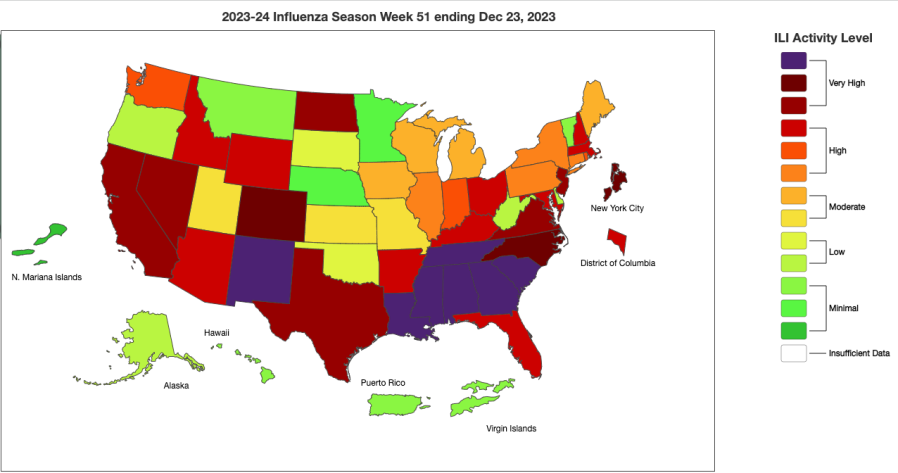CDC map shows dramatic increase in illness nationwide: See where it’s worst
(NEXSTAR) – What a difference a week can make. New data released by the Centers for Disease Control and Prevention Friday shows an 18% jump in people testing positive for influenza last week.
The number of people going to the doctor with symptoms of respiratory illness — whether it be the flu, COVID, RSV, or none of the above — also continues to trend upward. Now, according to the CDC, 21 states and New York City are experiencing “very high” levels of sickness.
Comparing the latest data to just one week prior (slideshow below) shows the situation worsening in the northern half of the country. Now, only one U.S. state, Minnesota, remains in the “minimal” category.
The majority of states are seeing “high” or “very high” levels of sickness. (See more using the CDC’s interactive map here.)
Even as the CDC’s map grows increasingly grim, the agency predicts we haven’t yet reached this season’s peak. Since the early 1980s, the most commonly observed peak of flu season has come in February.
It’s not just the flu going around. Hospital admissions for COVID have jumped 20% in the last week, and more people are testing positive for RSV, the CDC reports.
To create the maps above, the CDC compares current data from health care providers to what’s normal for that area outside of flu season. The data is based on the number of people reporting to a health care facility with flu symptoms — fever, plus a cough or sore throat. It is not based on lab-confirmed influenza cases.
That means the data could be including cases that turn out to be other respiratory illnesses, like COVID or RSV, but the cases could also be underreported, if people are staying home and fighting the sickness on their own.
Though we don’t have exact numbers, the CDC estimates there have been at least 10 million illnesses, 110,000 hospitalizations and 6,500 deaths so far this flu season. Twenty-seven children have also died.
Copyright 2023 Nexstar Media Inc. All rights reserved. This material may not be published, broadcast, rewritten, or redistributed.



